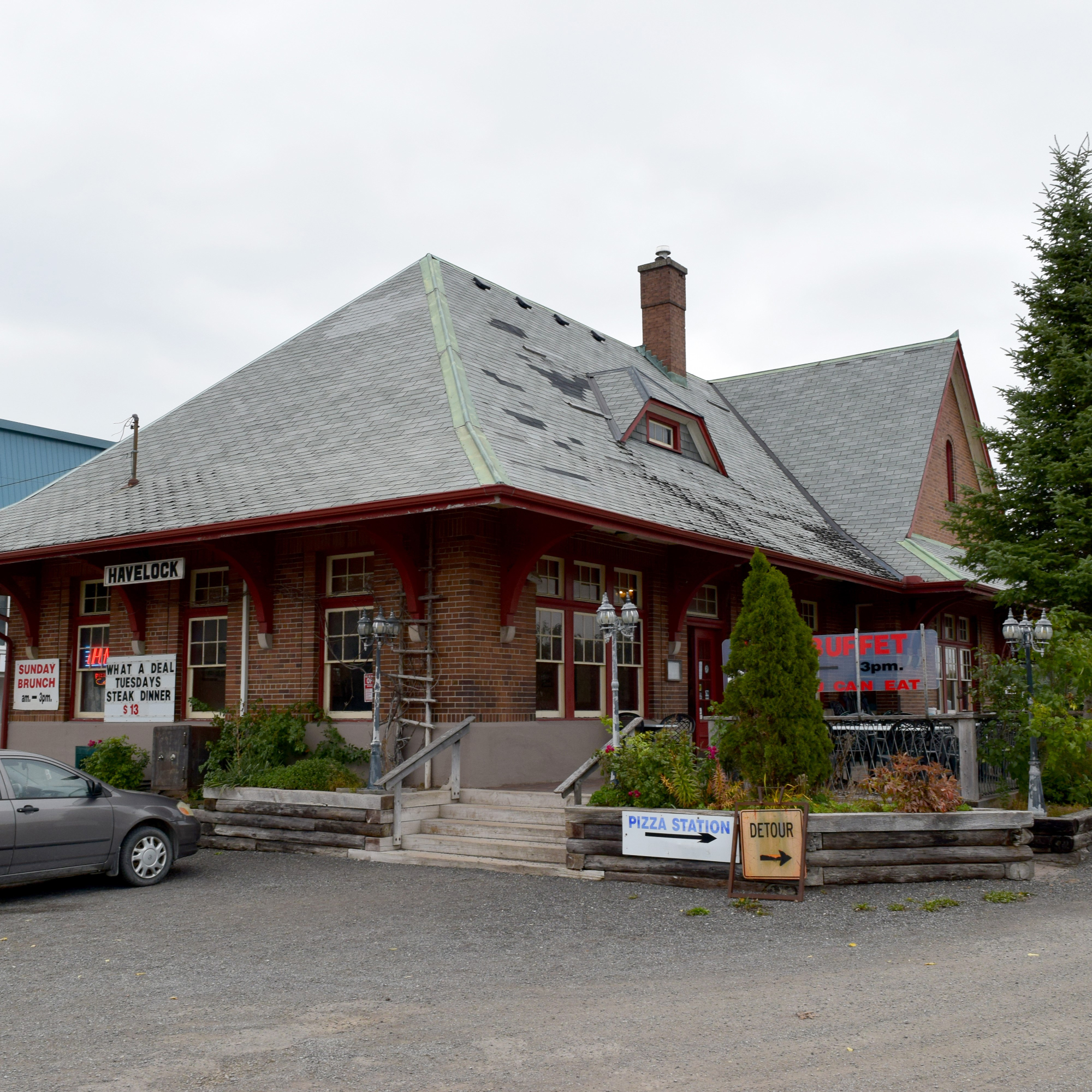From Train Service to Bar Service: Links to Ontario Railway History in Craft Beer (Part Two)
In part one of this series we explored examples of former train stations and railway buildings directly involved in the sale and production of craft beer and spirits. Part two of this series outlines former train stations that currently are in use as a brewpub or restaurant that serves craft beer. Ready for another round? Let’s begin!
Mudtown Brewery and Restaurant, Owen Sound, ON/CPR Owen Sound Station
The rails that the Canadian Pacific Railway used to access Owen Sound were the first to reach the community, doing so in 1873. They did so on behalf of the Toronto, Grey & Bruce Railway, which the CPR acquired in 1883. Their modern station was the most recent to be built in Owen Sound. It was constructed between 1946-47, replacing the original TG&B structure.
Owen Sound was a vital location for the CPR. It served as their primary port for grain shipments until the opening of Port McNicoll to the east, and as an access point for passengers looking to take a steamship to destinations along Lake Superior. Passenger trains continued to use the station until 1970. Service in later years was provided by RDC Dayliner coaches shuttling between Owen Sound and Toronto. Freight service continued on the line with the station serving as an office for the freight crews. The last CPR freight train left Owen Sound in 1995 with the line being abandoned during the same year. The rails between Owen Sound and Orangeville were eventually removed by 1998.
After sitting vacant for many years (including during my last visit to Owen Sound in 2017), the station has received a second life as Mudtown Station Brewery and Restaurant, opening in 2018. The name “Mudtown” is in reference to a relatively seedy part of town during its formative years. Much work and care has been put into opening the site as a bar and restaurant while preserving the historical design of the station. Mudtown has twelve taps available serving beer made on site and by guest brewers. Two beers of note are the “Brakeman Blond Ale” and “Dark Signal Porter”, which pay homage to the facility’s railway roots.
To learn more about Mudtown Station click here
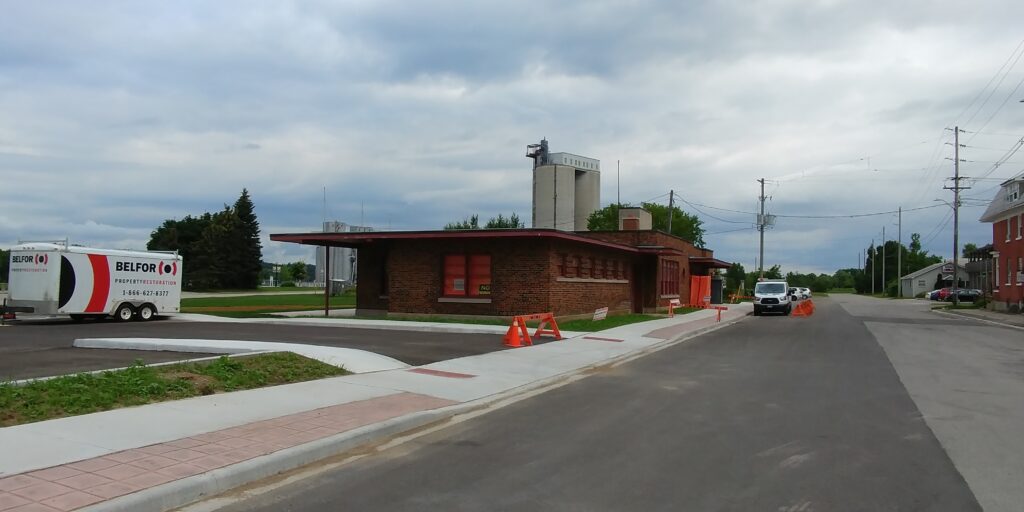
The Barley Vine Rail Co, Orangeville, ON/CPR Orangeville Station
Our next location is another stop along the line to Owen Sound. Orangeville was reached by the rails of the Toronto, Grey & Bruce in 1871. Within the year the rails were extended west to Mount Forest, and in the next few years to Owen Sound in the north and Teeswater to the west. All of which came under the ownership of the Canadian Pacific Railway in 1883.
The original TG&B station was a single story structure that stood near Townline on the east side of the rails. It was replaced by a more modern structure in 1907. It was noted for its “witches hat” roof style. For many years Orangeville served as a busy divisional point and its station served passengers looking to travel to and from Dufferin, Grey, and Bruce Counties.
The last passenger train to serve Orangeville left the station in 1970. From that point on it has been freight service only to the town. After many years of sitting abandoned and at risk of demolition, it was moved a few blocks to the north to Armstrong Street in 1989, where it now serves as a restaurant.
That restaurant today is known as Barley Vine Rail Com and offers a wide variety of food and drink options. They do offer craft beer as one of their many beverage options, however none at this time appear to be railway themed.
To learn more about Barley Vine click here
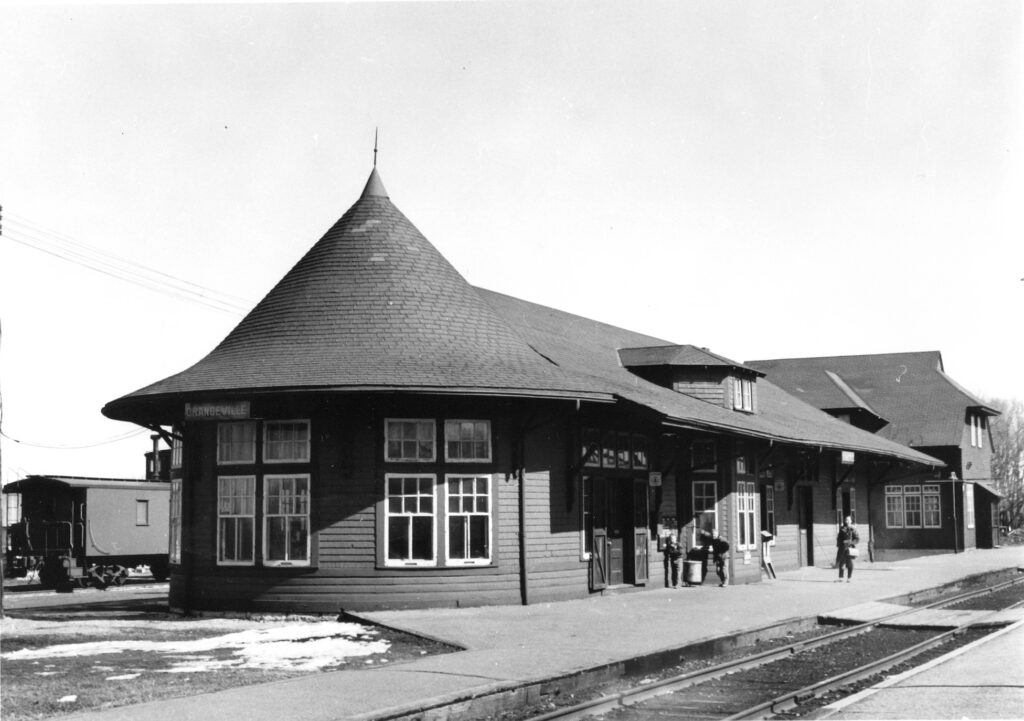
Beach Street Station, Goderich, ON/CPR Goderich Station
Yet another example of a former Canadian Pacific Railway building in use as a restaurant and taproom. The CPR first arrived in Goderich in 1907 through its Guelph & Goderich Railway charter. It constructed its station at the end of what is Harbour Lane today. An elegant brick structure, it is a unique building with a conical roof at the east end similar to a witches hat.
Despite being at a prime location near the waterfront and relatively close to downtown, service only lasted a few decades. The CPR was the second railway to reach Goderich, with the Buffalo and Lake Huron Railway (later acquired by the Grand Trunk) arriving nearly fifty years earlier. The CPR route from Goderich was primarily a through route between Goderich and the mainline at Guelph Junction, with most communities along the route being small and not generating a lot of revenue. Regular passenger service ended in the latter part of the 1950s. It was replaced by mixed service which continued until 1961. Freight service continued afterwards with the station serving as a crew office. This lasted until 1988 when the rails were abandoned and later removed.
The station remained in place for many years after abandonment. In 2013, it was lifted off its foundation and slowly moved to the west to its current location at 2 Beach Street. It was also turned about 90 degrees to the left. After extensive renovations, it was reopened as Beach Street Station.
Beach Street Station offers numerous food options as part of its menu. It also has numerous domestic and craft beer options for the thirsty patron. Like the other locations listed, great care has gone into creating excellent food while preserving the historical qualities of the location.
To learn more about Beach Street Station click here
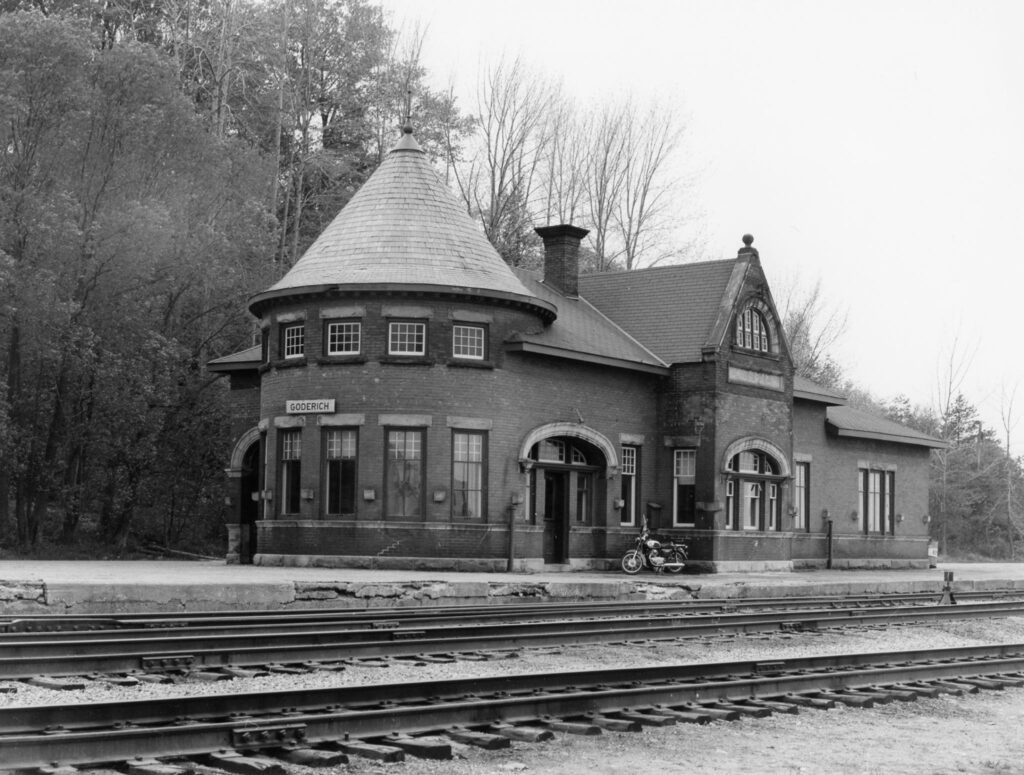
The Station Restaurant/The Pizza Station, Havelock, ON/CPR Havelock Station
Our final entry in this post is also a former Canadian Pacific Railway station. We head east to the small community of Havelock. This town was a former divisional point between the CPR’s Havelock and Peterborough Subdivisions. The line was originally constructed by the Ontario & Quebec Railway as a mainline that crossed through the central part of Eastern Ontario. It was then acquired by the Canadian Pacific Railway and formed an important part of its route across the province of Ontario. Havelock’s location at the approximate halfway point of the line made it a suitable choice for a divisional point. A station, yard, and engine house were constructed along the rails at the south end of the main street.
The original Havelock station was a two storey “Van Horne” style structure common at locations along this line. It was replaced by the current structure in 1929 after many years of construction. It continues to be one of the largest structures standing in the town and is hard to miss when driving through town on the Trans-Canada Highway. The fate of the original station is unclear. While the majority of the Van Horne stations were torn down, a building located a few doors to the west of the current station has been theorized as being part of the original station. Another one of our historians, Adam, has been working on researching the fate of this structure. His work can be seen by clicking here
Havelock’s station stopped serving passengers in 1990 following the termination of VIA Rail RDC commuter trains running between Toronto and Havelock. It was designated a historical structure in 1991 and has been preserved in excellent condition. The rails in Havelock still receive freight service from the Kawartha Lakes Railway, which is an internal short line railway operated by the Canadian Pacific Railway. The yard south of the station continues to store hoppers of nepheline syenite from the Nephton and Blue Mountain mines located north of Havelock. The station was converted for use as a restaurant in 2004.
The restaurant to set up in the station is appropriately named “The Station Restaurant”. I’ve learned after contacting the restaurant that local craft beer is available for patrons looking to stop in for a drink. Examples include Red Ale from Church Key Brewing Company and Pale Ale from Longtooth Beverage Company, both made in nearby Campbellford. A second section of the restaurant, The Pizza Station, is dedicated solely to making hot and fresh pizzas to go with one’s beer. Their patio serves as an excellent location to grab a cold one and watch trains shunt cars in the yard.
For more information about The Station Restaurant/The Pizza Station click here
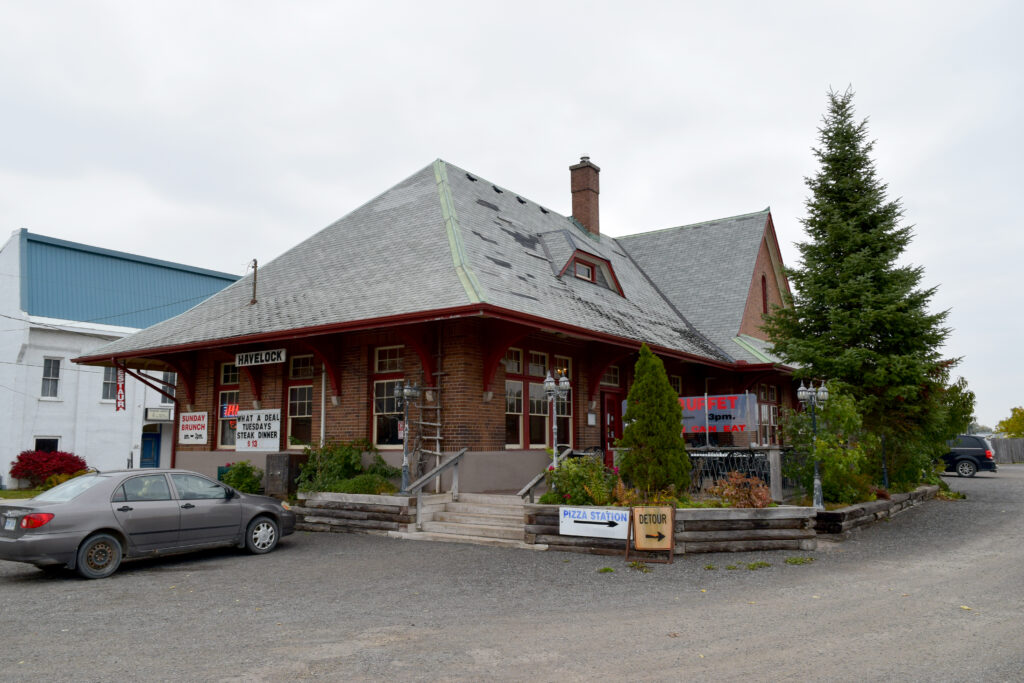
Thirsty for more? Stay tuned for part three of our series where we explore breweries whose name or location is connected to a railway in Ontario.
Are there any examples that have been missed so far? If so I would love to hear about it! You can connect with me by emailing danielallen.trombone@gmail.com.
Historical Sources:
Barley Vine Rail Co. (n.d.). About Us. Retrieved on August 7th from https://thebvrco.com/about-us/
Beach Street Station. (n.d.). Our History. Retrieved on August 7th from https://www.beachstreetstation.com/our-history
Canadian Pacific Railway Station, Heritage Railway Station of Canada, Havelock, Ontario. (n.d.). Parks Canada Directory of Federal Heritage Designations. https://www.pc.gc.ca/apps/dfhd/page_hrs_eng.aspx?id=2008
Clarke R. (2007). Narrow Gauge Through The Bush: Ontario’s Toronto Grey & Bruce and Toronto & Nipissing Railway. Self-published.
Gravelle, P. (2018, April, 19). Train Stations Remembered As Community Hubs. Erin Insight. https://erininsight.blogspot.com/2018/04/train-stations-remembered-as-community.html?m=1
Hansen, K. (1997). Last Trains From Lindsay. Sandy Flats Publications.
Hardy, J.R. (1999). Rusty Rails: A Photographic Record Of Branchline Railways in Midwestern Ontario 1961-1996. Self-published.
Kennedy, R.L. (n.d.). Toronto, Grey, & Bruce. Old Time Trains. http://www.trainweb.org/oldtimetrains/OandQ/TGandB/history_tgb.htm
Mudtown Station. (n.d.). CPR Station. Retrieved on August 7th, 2021 from https://www.mudtownstation.ca/copy-of-our-story
Mudtown Station. (n.d.). Our Story. Retrieved on August 7th, 2021 from https://www.mudtownstation.ca/our_story
Peltenburg, A. (2020, December, 7). Field Trip: Remnants Of The Railway in Havelock. Toronto Railway Historical Association. https://www.trha.ca/trha/railway-remnants-in-havelock/
The Station Restaurant. (2016). Discover Our History. Retrieved on August 7th from https://www.stationrestaurant.ca/
Wilson D.M. (1984). The Ontario and Quebec Railway. Mika Publishing Company.


